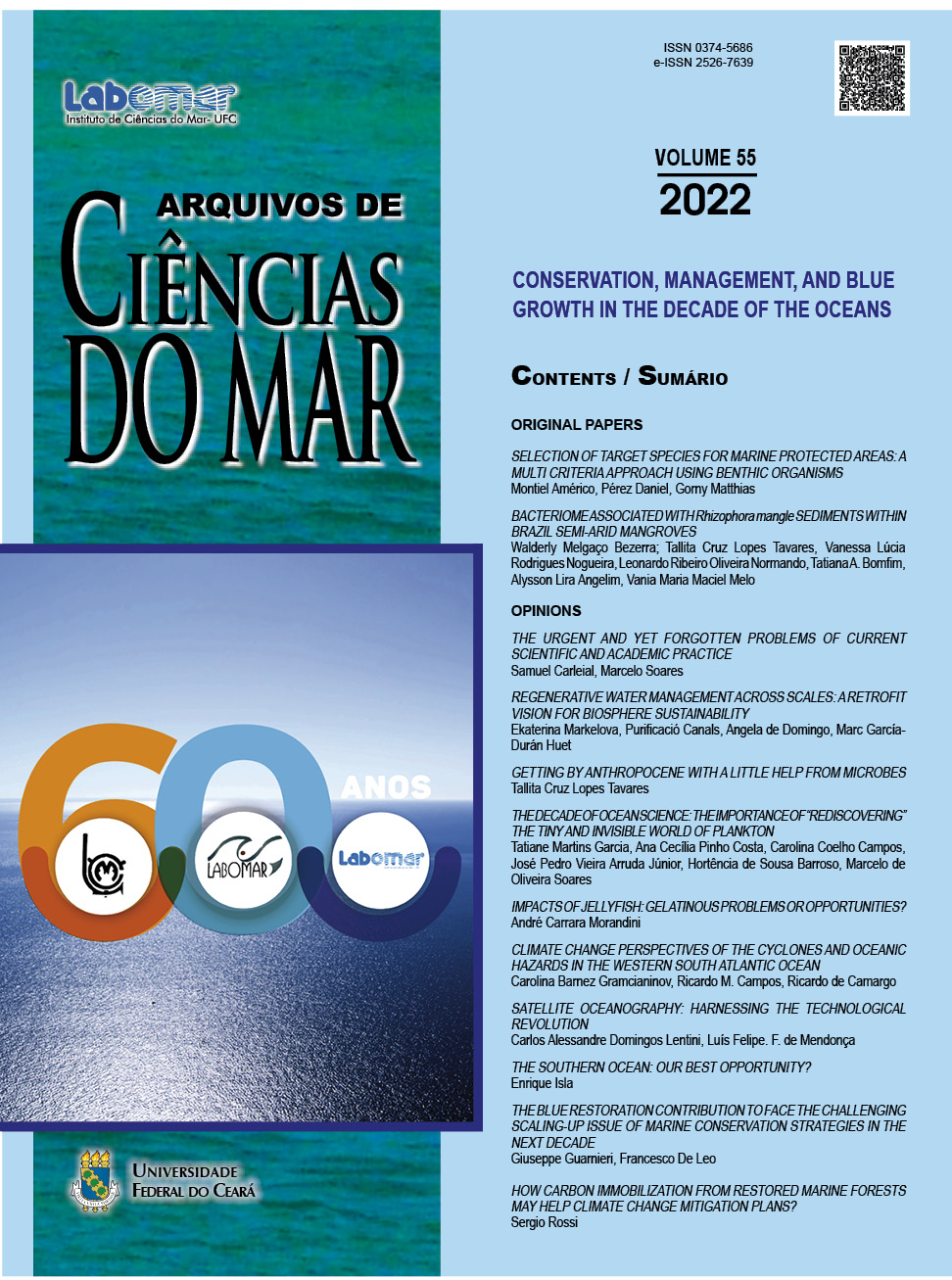SELECTION OF TARGET SPECIES FOR MARINE PROTECTED AREAS: A MULTI CRITERIA APPROACH USING BENTHIC ORGANISMS
Seleção de espécies-alvo para áreas marinhas protegidas: uma abordagem multicritério usando organismos bentônicos
DOI:
https://doi.org/10.32360/acmar.v55iEspecial.78210Abstract
The selection of optimal target species to define and manage protected marine areas (MPAs) has generated a great scientific discussion during the past decades. Benthic invertebrates are commonly less considered as important target species, despite their pivotal role in marine ecosystems. To address this issue, we determined target species among benthic marine organisms using a multi-criteria approach. For this purpose, we used a data base from the Katalalixar National Reserve (RNK) in central Patagonia, Chile. The data were obtained through underwater photography and quantitative sampling by means of scuba diving during three expeditions between 2017 and 2019. Based on the total taxonomical inventory from both methods, a SIMPER analysis was used to determine 10 candidate species, and the Landscape Selection Species program was used for the selection of target species. Finally, eight target species were selected. The black snail Tegula atra, the hermit crab Pagurus comptus, the gastropod Crepipatella dilatata, and the polychaete Platynereis australis were selected among errant species. Among sessile species, the encrusting coralline algae Lithothamnium sp., the sea anemone Actinostola chilensis, the parchment worm Chaetopterus variopedatus, and the encrusting ascidia Didemnum sp. were the selected species. Based on our results we expect that these species will be included as target species in future management plans to improve protection of the marine environment of the Katalalixar National Reserve, one of the most pristine areas of the Chilean fjord region.
Keywords: macroinvertebrates, macroalgae, biodiversity, Patagonia.
Downloads
Published
Issue
Section
License
1. Proposta de Política para Periódicos de Acesso Livre
Autores que publicam nesta revista concordam com os seguintes termos:
- Autores mantém os direitos autorais e concedem à revista o direito de primeira publicação, com o trabalho simultaneamente licenciado sob a Licença Creative Commons Attribution que permite o compartilhamento do trabalho com reconhecimento da autoria e publicação inicial nesta revista.
- Autores têm autorização para assumir contratos adicionais separadamente, para distribuição não-exclusiva da versão do trabalho publicada nesta revista (ex.: publicar em repositório institucional ou como capítulo de livro), com reconhecimento de autoria e publicação inicial nesta revista.
- Autores têm permissão e são estimulados a publicar e distribuir seu trabalho online (ex.: em repositórios institucionais ou na sua página pessoal) a qualquer ponto antes ou durante o processo editorial, já que isso pode gerar alterações produtivas, bem como aumentar o impacto e a citação do trabalho publicado (Veja O Efeito do Acesso Livre).

